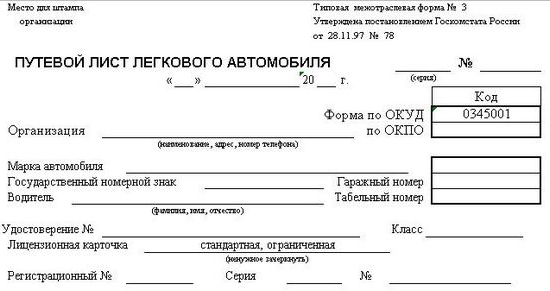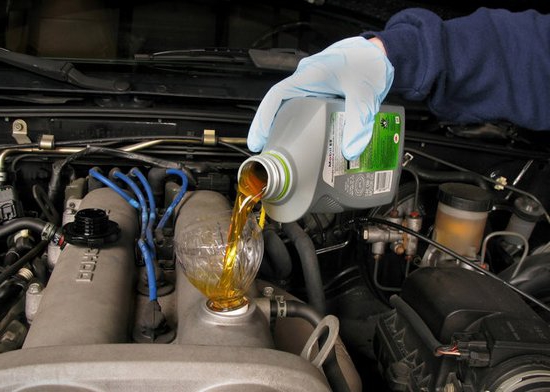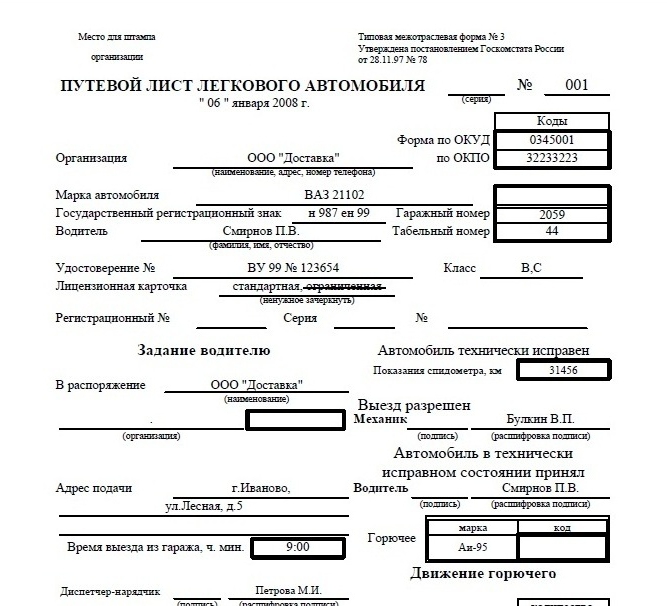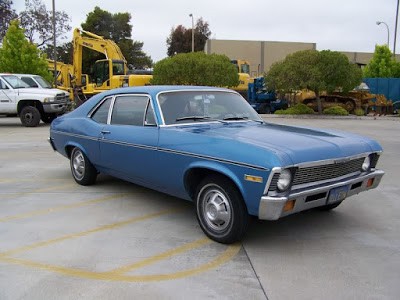The waybill of a passenger car (form No. 3) is necessary when planning, organizing, accounting and managing transportation. Paperwork is carried out in accordance with the instructions governing the calculation of transportation. Other primary securities include a journal, which records the movement of waybills, as well as waybill.

Mandatory documents
When working in a passenger car, a driver who is part of the organization’s staff must have:
- A certificate for the right to manage the product with the appropriate category or a temporary permit.
- Registration papers on transport and on the trailer (if available).
- Waybill of a car.
- Consignment note for cargo.
- Special permit for the transport of dangerous or bulky goods.
Waybill of a car. Sample fill
Responsibility for the correct execution of the document lies with the head of the organization, as well as persons involved in the process of entering data into paper and responsible for the operation of transport. The driver does not fill out the waybill of the car. Upon receipt (before departure) and delivery (upon return), he puts his signature. Before the paper is handed over to the driver, an authorized person or dispatcher enters the necessary information into the passenger car's waybill. The form contains lines that indicate:
- a date (year, month, day) corresponding to that in the register;
- working hours (business trip, weekdays, daily or cumulative schedule, holiday or weekend, overtime, etc.);
- brand and type of product, its state and garage number.
If there is a semitrailer or trailer, information about it is entered in the appropriate section. The line "Escort" indicates information about the persons participating in the transportation. The “Vehicle and driver operation” section contains information about the time (hours and minutes) of departure and return of the vehicle. In the section "Task" in the column "At whose disposal" in accordance with the application the name of the customer is entered. The line "Arrival time" reflects the time (hours and minutes) at which the transport arrived at its destination.
The waybill of a passenger car also contains information about fuel. This information is indicated on the front side of the document. Here, in writing, the authorized person enters information on the amount of fuel required to complete the task under the contract. In this case, the remaining fuel from the previous working day is taken into account. If the carriage waybill is drawn up correctly, the authorized person puts his signature on the corresponding line. So the dispatcher confirms the correctness of the document.
Departure from the garage

Immediately before sending the transport, the passenger car's waybill is filled in the appropriate columns by a mechanic (fuel and lubricant technician). This authorized person shall enter information in the lines of the Fuel Movement section. Here he enters information about the amount of fuel that was issued, numbers and series of coupons. Correspondence of information to reality is certified by the mechanic with his own signature.
Pre-Flight Inspection Information
The waybill of a passenger car contains information about the health status of the driver. They are entered into the document by the organization’s health worker. Based on the pre-trip inspection, a conclusion is made about the driver’s access to transport management and the assignment.In case of unsatisfactory state of health, the car is canceled.

Departure from the checkpoint
Immediately before leaving the organization’s territory, the mechanic of the checkpoint enters the speedometer in the passenger car’s waybill. They are indicated in column 4 of the "Vehicle and driver operation" section. This information can also be entered by the mechanic of the Quality Control Department.
In addition to the speedometer, the authorized person writes down the actual time on which the vehicle left the territory on the waybill of the car. In the section "Movement of fuel", in the column "Remainder at the time of dispatch", information on the amount of fuel in the tank is entered.
The transfer of the vehicle to the driver in good condition, as well as the compliance of the information with reality, shall be certified by the signature of the mechanic. The driver, respectively, also signs under all the filled lines. So he confirms the acceptance of the car in good condition, as well as the receipt of a work assignment.
Information about traffic on the line
The introduction of this information is carried out in a certain sequence. The line "Arrival time" reflects the hours and minutes at which the driver handed the waybill to the customer. The latter signs in the document, certifying the arrival of the transport. The columns "Upon departure" and "Upon arrival" contain the speedometer at the time the driver entered the customer’s territory and left it. The column "Special Marks" contains information that is not provided for in the form of the document. These include, in particular, customer notes on failure, road service employees, etc.

Return of transport to the garage
After completing the assignment, the waybill is issued in the reverse departure sequence. The first mark is made at the checkpoint. The mechanic or other authorized person in the column "Work of the car and driver" makes information about the actual time of return of funds to the territory of the organization.
Along with this, a line is filled containing the speedometer and data on the remaining fuel. The fuel technician fills in the “Delivered” line, entering the remainder in the tank there after the fact. The correctness of the information is confirmed by the signature of the authorized person.
The mechanic of the gearbox takes the car from the driver. In the line “Accepted”, the authorized person signs the acceptance of the funds in good (or faulty) condition. In the column "Passed" the driver signs, confirming the return of transport. The waybill of the car is given to the dispatcher. He, in turn, puts a signature in the corresponding line of the document and carries out its registration in the accounting journal.

additional information
As a rule, a waybill is issued to the driver for 1 business day. In this case, a document for the previous day should be handed over. In the case of intercity transportation, clearance is carried out for a longer period. In some cases, an organization may use a passenger car's waybill for a month. Such a document must be approved in accordance with the accounting policies of the company.
Download Waybill passenger car form 3








